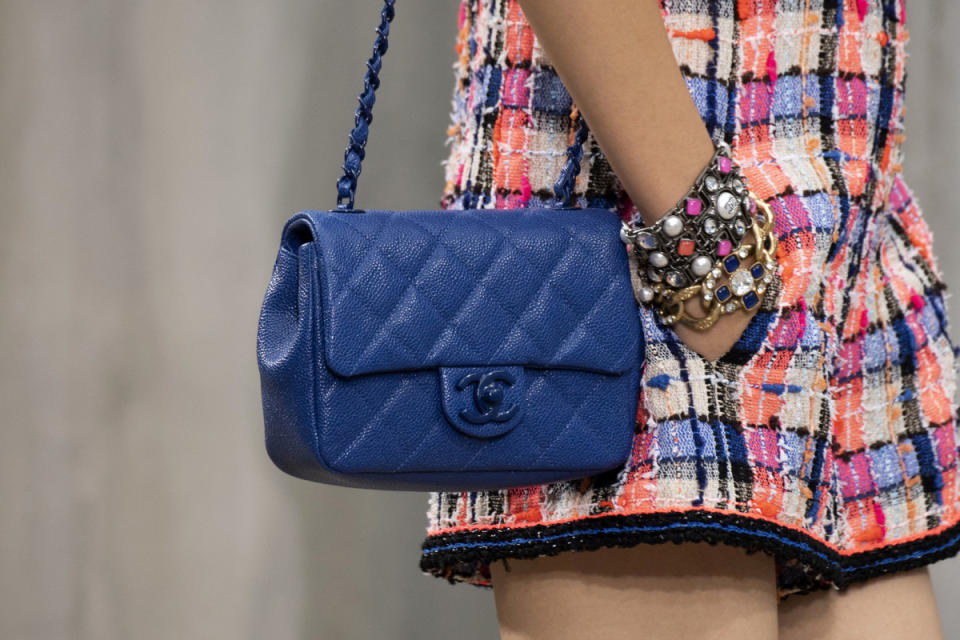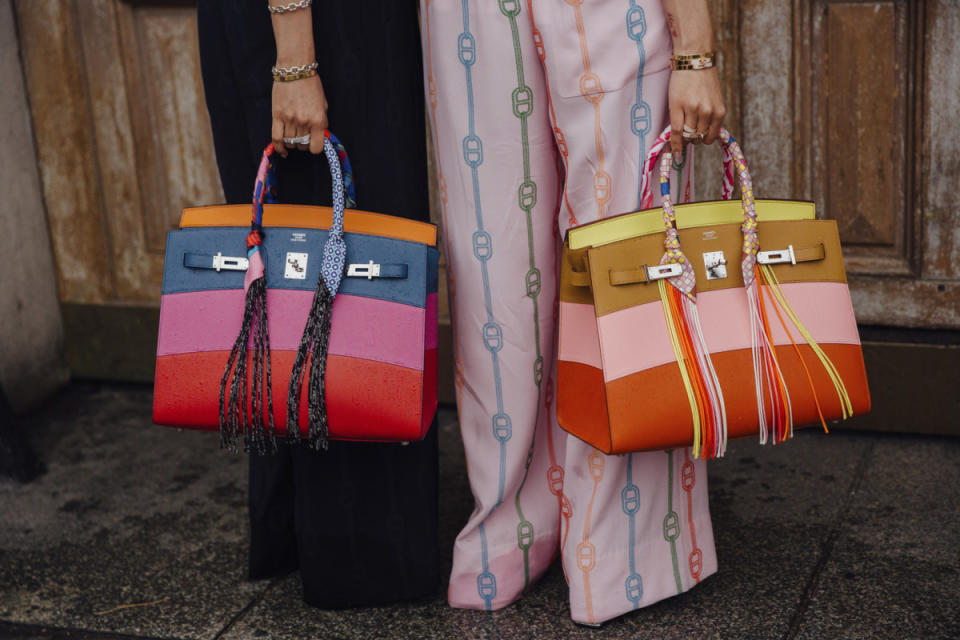What Can Fashion Brands Do to Protect Themselves in the Secondhand Market?
In February, Chanel claimed victory in its trademark infringement lawsuit against luxury resale boutique What Goes Around Comes Around (WGACA) after six years in court. The French luxury house's legal team unanimously won over the New York jury — and a pretty penny of $4 million in statutory damages — with its argument that WGACA infringed on its trademarks and confused customers through false advertising and false association.
One of the many interesting aspects of this dispute is that it went to a jury at all, "as opposed to a settlement out of court," Jonathan Lazarow, co-founder and partner at the law firm Ambrose, Mills & Lazarow says. "Chanel decided that they'd rather have something out there in the legal system. I can't understate, as an attorney, how important that is."
By having the matter play out on a larger, more public scale, the lawsuit became a cautionary tale — to secondhand stores and to brands. It didn't result in any new standards or disclosures for resellers, but it did show that lawyers are paying attention and thinking about how to protect their clients' image in this ever-growing market.
"Customers have always resold items and regifted items, but it was flea markets, yard sales and mom-and-pop consignment stores," says Susan Scafidi, founder of the Fashion Law Institute at Fordham Law. This practice then moved onto the internet, with the advent of sites like Craigslist and eBay — and that's when trademark-related legal battles began to play out.
In 2004, for example, Tiffany & Co. sued eBay, alleging that its users were selling counterfeit jewelry. The jewelry company lost, as the court ruled the e-tailer had adequate anti-fake measures in place and couldn't be held responsible for users' violations. Of course, this was only the beginning: The secondhand landscape has completely transformed since then, with new selling models and many, many more players — including ones specific to luxury fashion, like The RealReal and Vestiaire Collective — in the game.
"It's something new that luxury brands in particular have had to face up to," Scafidi says. "You throw in not only the rationale that the customer can get a bargain, but that it's better for the planet. Brands have to sit up and pay attention, because now they feel like they might be losing sales."

Photo: Launchmetrics Spotlight
The most relevant legal protection brands have for their trademarks is something called the first sale doctrine. As Benjamin Thompson, managing partner of Thompson LLP and Parsons School of Design adjunct professor, explains: "It means that once the legitimate item leaves the trademark holder's hands, it's up to the consumer what to do next. But if the item has a trademark on it, and if that item is somehow materially altered [or significantly changed from its original state], you can't necessarily resell it, at least not without disclosing that [it's altered]."
In Chanel v. WGACA, the jury found that WGACA was making it seem like there was a relationship between both parties through its marketing — hashtags combining the companies' names and overly-branded window displays — which could make it seem like the French house endorsed the retailer or that all the pieces sold were authentic (an issue of nominative fair use, to be specific). "One of the greatest concerns of trademark owners is that their commerce can be adulterated," Scafidi says.
Staci Trager, a partner at DLA Piper, warns that fashion's next trademark infringement frontier will be related to customized products, as more people make businesses out of upcycling branded materials (for example, someone who repurposes Hermès scarves into a jacket). Back in April, Chanel lawyers sent a cease and desist letter to stylist Logan Horne, who does this type of work, per Business of Fashion. In March, Rolex also took issue with watch dealers customizing its timepieces and making them "materially different" from the originals.
For brands, there are a few paths forward. They can partner with resale platforms to sell and authenticate their items (like how The RealReal and Vestiaire Collective have over the years), or they can create their own resale program in-house and "get a piece of that resale action a little more directly," as Scafidi puts it. Oscar de la Renta has done this through a partnership with Encore, as has Valentino. "[Both] are really their options for controlling their image, controlling the quality of the goods and making sure the goods are genuine," she says.
This ever-evolving issue can create business opportunities not just for companies like Encore, which can power resale for a brand, but also for programs like Entrupy, which offer services to catch counterfeit items before they're listed. After all, when shoppers receive a fake, it not only damages the image of the brand, but also that of the resale platform.

Photo: Launchmetrics Spotlight
"If the market understands you're not [protecting your trademark] and you have a popular brand or product, the underside of the market will exploit and capitalize on that," Thompson says. Even more, if brands are negligent in protecting their image, there's a risk of "erosion of protectability by virtue of non-enforcement" — in other words, courts may be less likely to take future trademark complaints seriously. "If you don't care, the law doesn't care either," he adds.
Diving into litigation isn't always necessary, especially for a fashion label without a financial resources or a legal department akin to Chanel's. Companies can be assertive via actions like sending letters, or what they're able to afford. There are some low-cost resources available, too, like the Fashion Law Institute's free clinic.
"What we're seeing is evolution in expected norms. The way that our [legal] system works is not by setting forth detailed rules of the game," Scafidi says. More cases like Chanel v. WGACA are sure to come as the industry navigates a new era of resale and, with it, new questions around trademark law.
Want the latest fashion industry news first? Sign up for our daily newsletter.

 Yahoo Finance
Yahoo Finance 